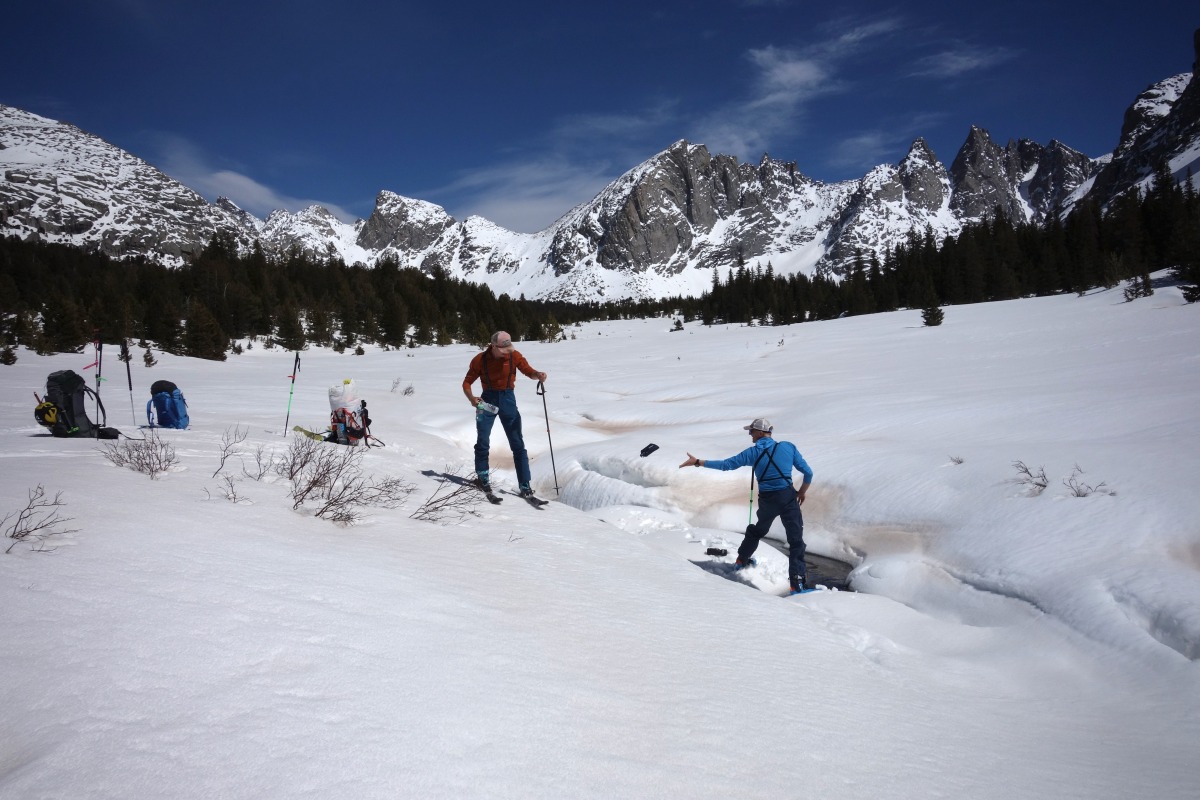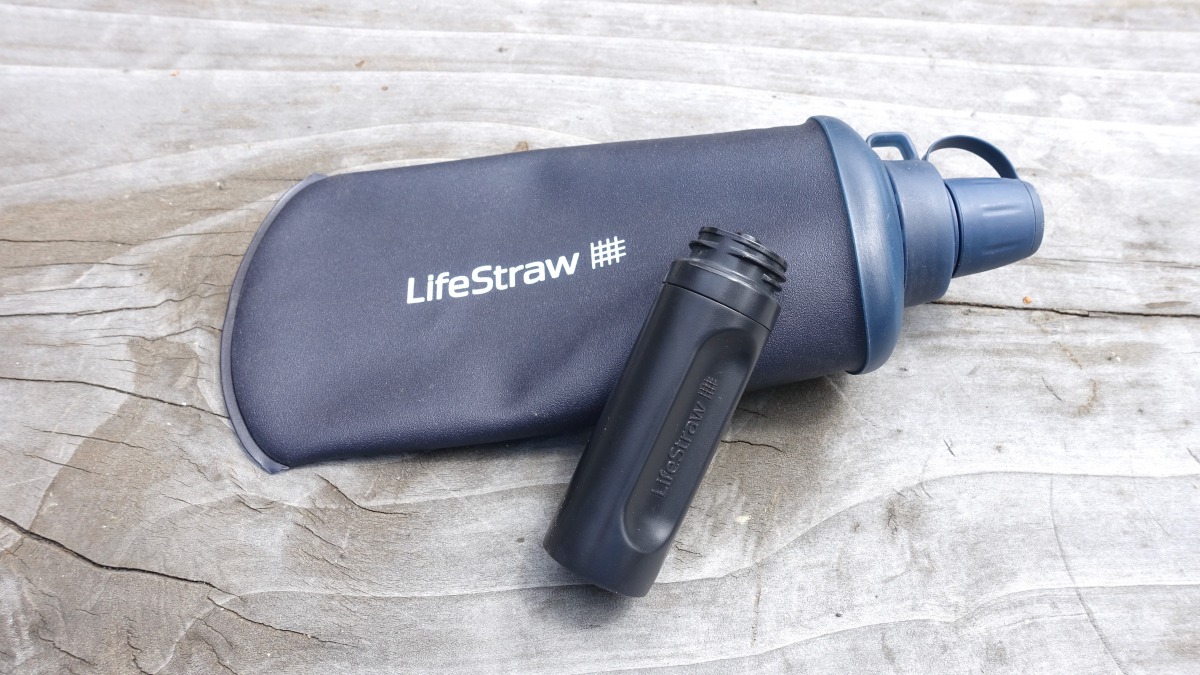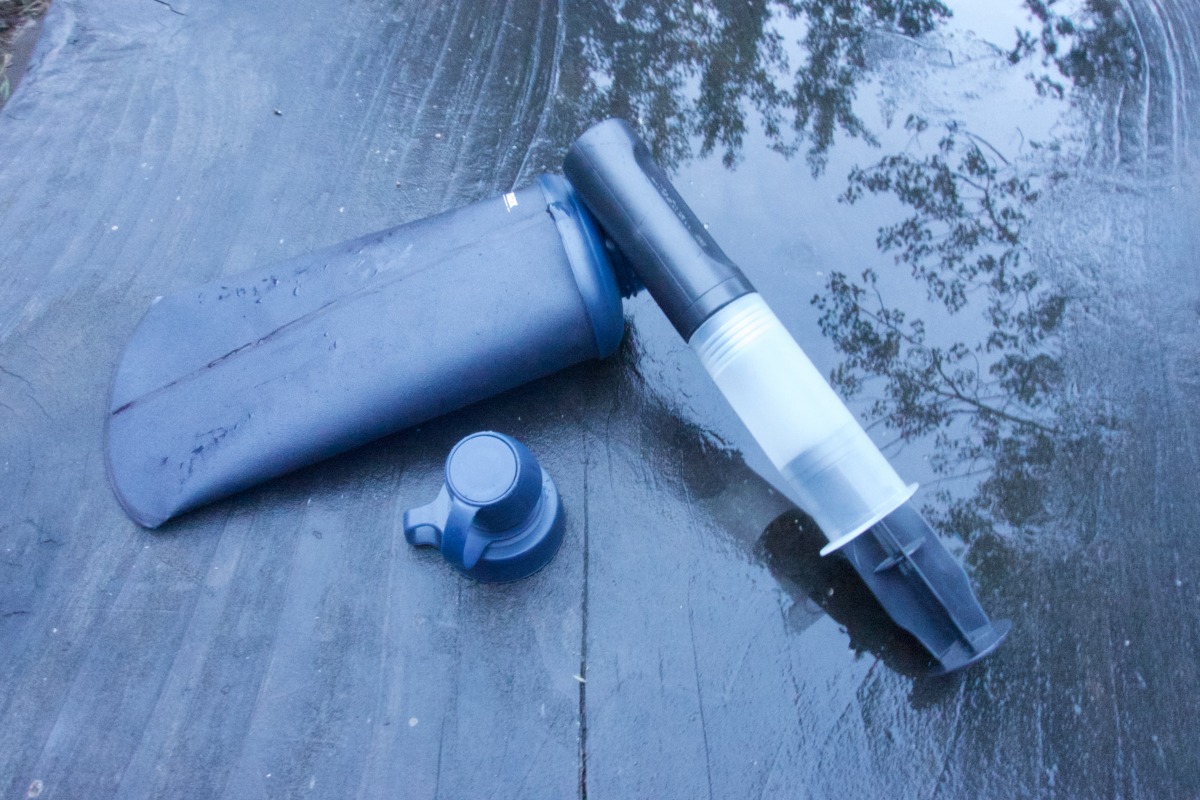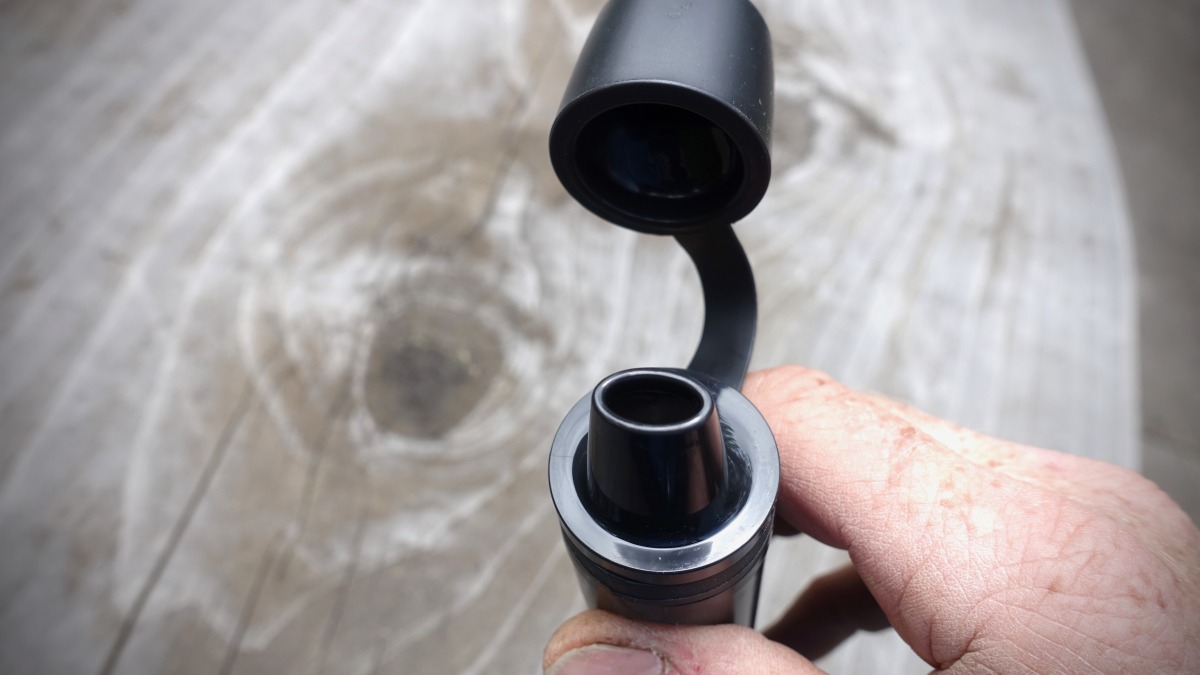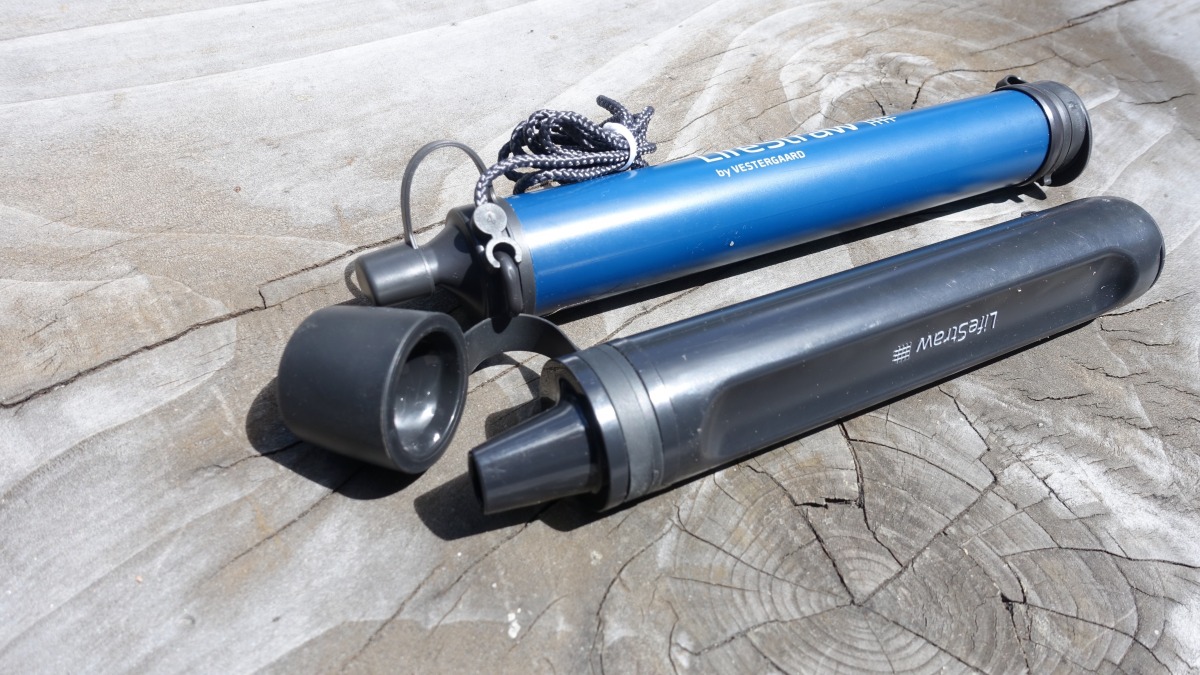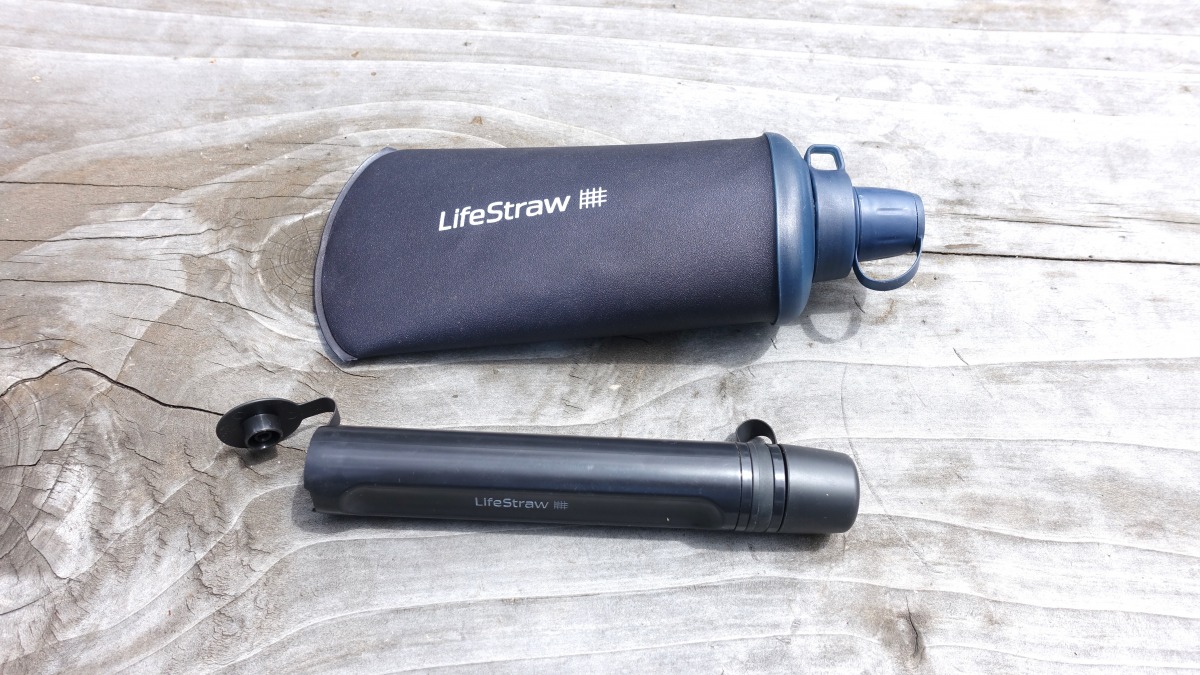
Lifestraw’s Peak Squeeze soft flask up top and the Peak Straw below (7.7″ for scale). Both feature lightweight, carry anywhere personal water filtration systems.
There’s undoubtedly some unsexy, but essential gear out there. Hydration systems, for me, fall into that category. As spring and summer cage fight with a resilient late winter here in the PNW, hydration is on my mind. Lifestraw, a personal water filtration focused company, has been designing and selling systems for years. According to their website, back in 1999, Vestergaard, Lifestraw’s parent company, developed “a plastic pipe filter to strain out Guinea worm larva (and prevent Guinea worm disease) for The Carter Center.” Lifestraw released a commercial straw style filter in 2005. All this means these folks have a track record and do good work.
Until recently, I was one of those springtime skiers and summertime runners who might throw some iodine tablets in the pack as a backup method to source potable water. I’m also someone who drinks straight from many streams in early spring. But I’ve also been caught out high, dry, and thirsty, or worse, with GI distress.
Late winter, I got my hands on a few Lifestraw products I imagined would be prized lightweight personal water filtration devices; the 650ml Peak Squeeze and a Peak Straw. Both devices include hollow-core membrane microfilters that “protect against” 99.999% of bacteria, 99.999% of parasites, 99.999% of microplastics, silt, sand, and cloudiness, and feature a pore size of 0.2 microns.
A reminder about filters and cold temps: according to Lifestraw, the recommended temperature ranges are 33 degrees Fahrenheit/1 degree Celsius to 140 degrees Fahrenheit/60 degree Celsius for their filter products. Any freezing will damage the filter. The best practice for using a filter in or around freezing temps is to keep the filter close to your body, and on overnights, do the same, and store it in the sleeping bag.
Peak Squeeze
In the Wind Rivers recently, we had the full range of temps, including below freezing. I brought along the Peak Squeeze as the dual-purpose water vessel and filter. I began each day with a filled 1L Nalgene, a bike water bottle ~650ml, and the Peak Squeeze. On the go, I often added snow to the bike water bottle and replenished it from the Nalgene and Peak Squeeze as needed.
However, it was spring, and at 10,000 feet and lower, we expected to encounter open water at a few spots. When we intersected running water, we filtered using the Peak Squeeze. (We drank directly from lake outflows two or three times.) The process was simple; dip the Peak Squeeze into the stream, fill it up, squeeze the flask, and refill our water bottles. We each refilled approximately two liters of water, roughly six liters total, at each stop. The filtration process, including skis on and off, wallowing to the open water, filling, and refilling, took no more than 20 minutes.
Without the filter, our alternative water resupply method meant stopping and melting snow with our MSR Windburner stove: This would have taken more time and necessitated carrying more fuel.
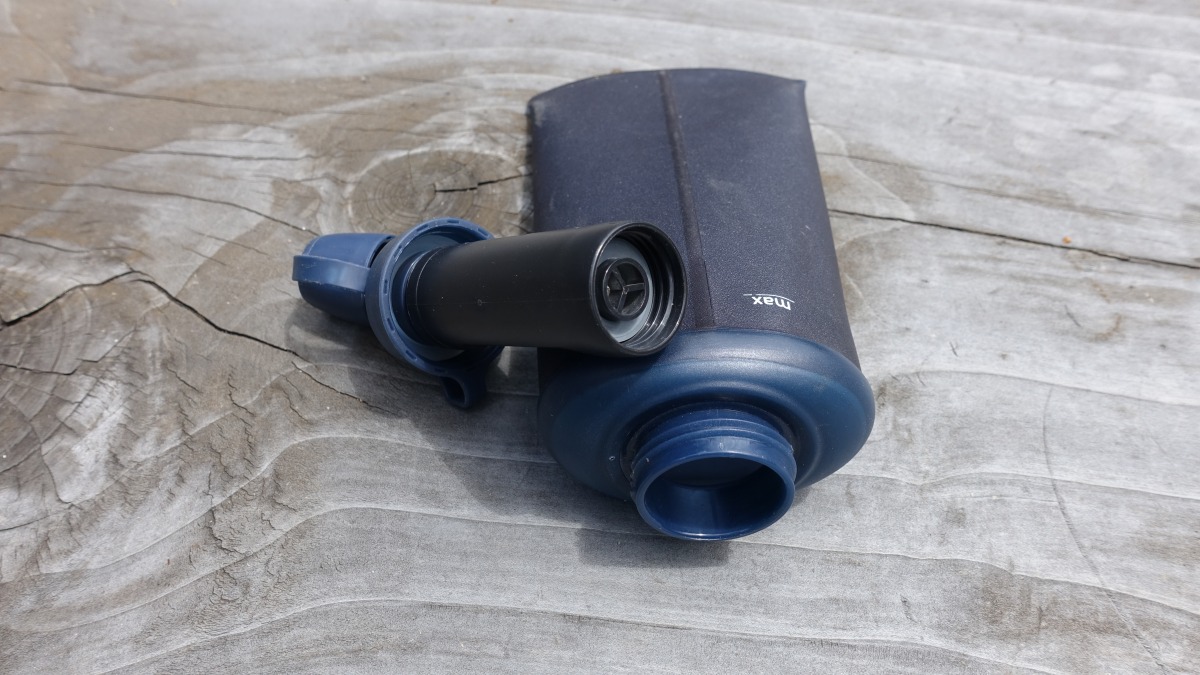
Here, the Peak Squeeze’s filter is attached to the screw on cap. In my experience, a full Peak Squeeze stuffed in my pack (filter screwed in place) was leak proof.
The Peak Squeeze is simple to use. A small filter screws into the flask’s lid. Fill the flask with water, screw on the lid with the filter attached, and squeeze; the outflowing water is filtered. You can drink straight from the flask or use it as we did, as a small yet portable filter to replenish other water bottles. The Peak Squeeze comes with a small syringe to use as a backwash.
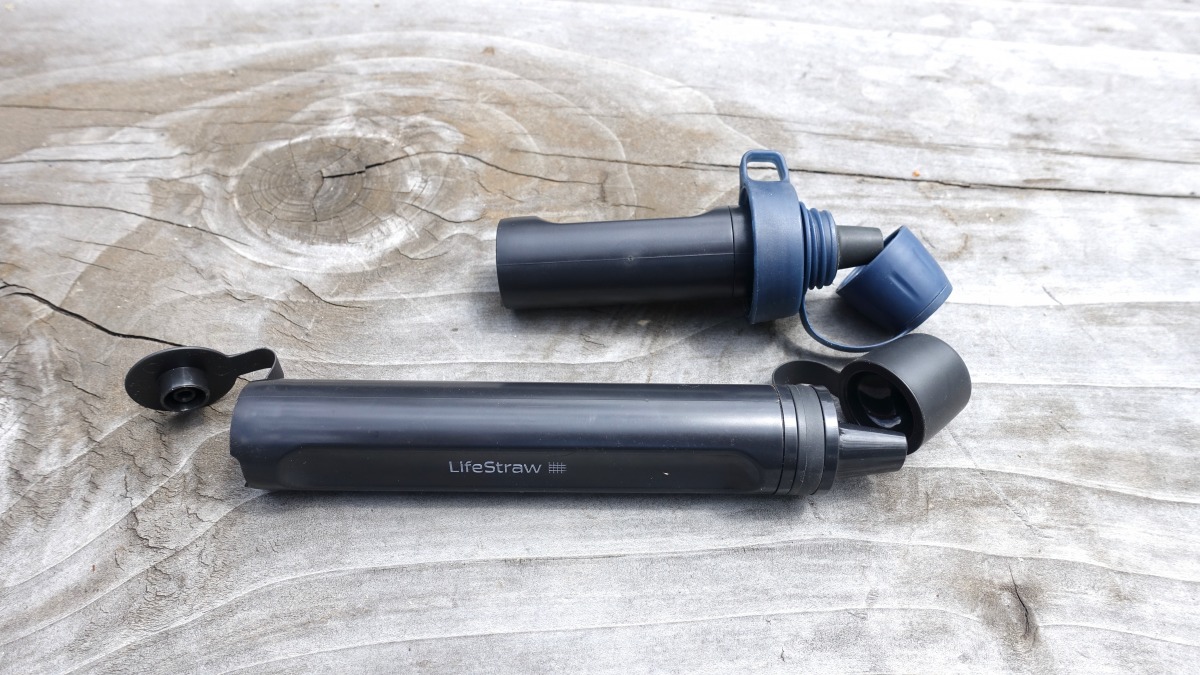
A comparison of the Peak Squeeze filter on top, and the Peak Straw below. The Peak Squeeze filter can also be used as a straw.
I like soft flasks for the very reason that they reduce in size as you consume water. In the case of the Peak Squeeze, the filter is easily removed. If you require the filter, the weight penalty is negligible. Another upside is that you can use the Peak Squeeze’s filter as a straw; unscrew the filter from the flask, top it with the rubber mouthpiece, insert it into the source water, and sip. The only drawback compared to a regular-sized Peak Series Straw (7.7″ long) is that you must get closer to the water source. That’s not a deal-breaker, but at approximately half the size of the Peak Straw, you’ll be contorting a bit more to get within a sippable distance to the water.
(Some workarounds if you use the filter as a straw, this applies for the Peak Straw, too; bring a cup or Ziplock bag and fill that with the unfiltered water. Dip the straw in the cup/Ziploc bag, and sip.)
The flask is durable BPA-free plastic. So far, I’ve had no durability issues after several outings and a week-long tour. I have used the lightweight and compact Sawyer Squeeze water filter system. I have had the included water pouch spring micro-leaks on two occasions near the filter-cap interface. Despite being heavier than the Sawyer water pouch, the Peak Squeeze’s soft flask seems worth the extra weight.
Peak Straw
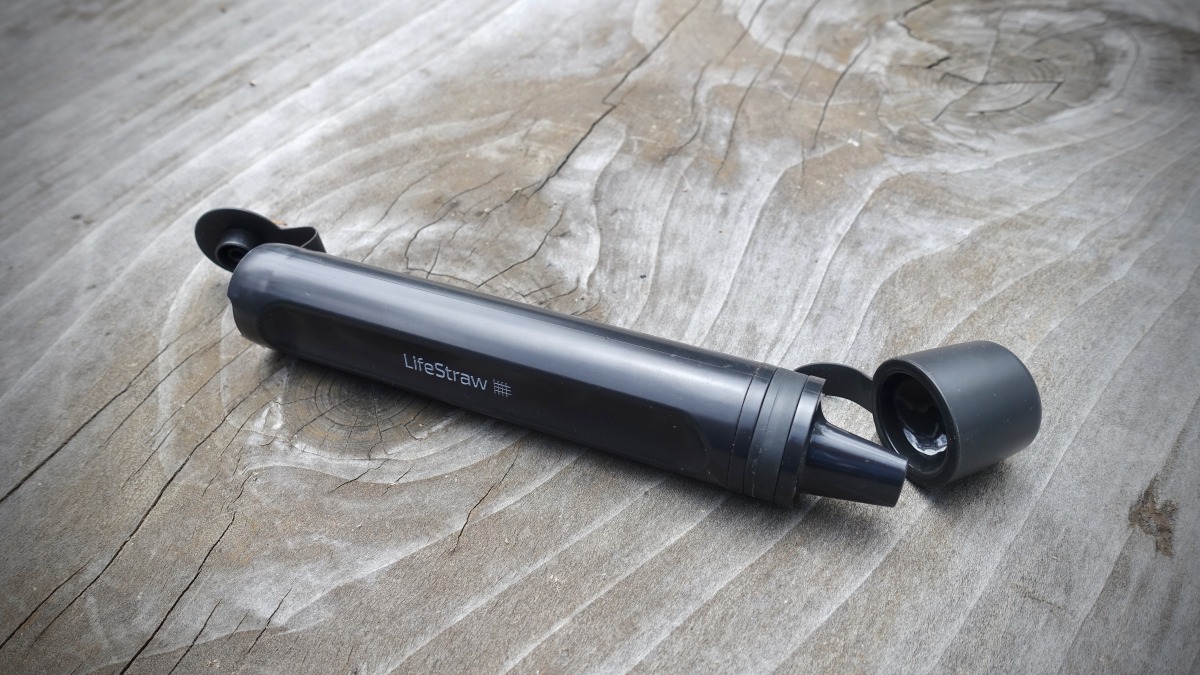
The Peak Straw is a robust 7.7″ filtration straw that makes it easy to carry a personal filtration device on any mission. This is a good choice for those who enjoy long mountain runs.
The Peak Straw is a sibling of the Squeeze but is a more pared-down item. As the name suggests, it is a high-tech straw with a built-in filter. It piggybacks on the older school design of the original LifeStraw; it’s now constructed with a slightly beefier build.
The old style Straw, which is still available for around $14.00, weighs 45g (verified, no lanyard), roughly half the weight of the new Peak Straw (88g) I’m holding. That extra 43 g materializes in what feels like a much more durable unit; the original Straw feels like a plastic toy in comparison. The original design was developed and brought to market 17 years ago with no redesign until now.
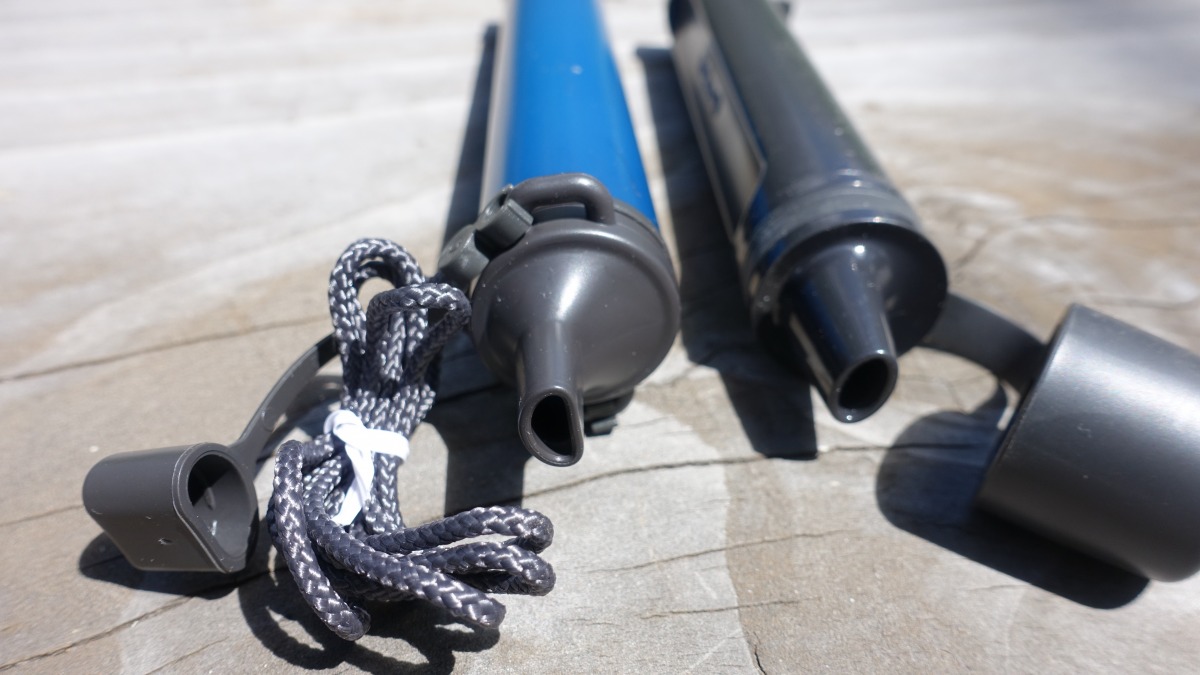
The original straw (left), Peak Straw (right). The original was first deigned and brought to market 17 years ago. 2022 sees a reboot with the the Peak Straw. The new mouthpiece is slightly larger and easier to draw water from too.
Both the top and bottom are capped, like the original design. The caps should prevent contamination. The top cap prevents the mouthpiece from coming in direct contact with unfiltered water, while the bottom cap prevents unfiltered water from dripping.
The new Peak Straw’s upside is its simplicity. I can see keeping this in my running vest all summer if I run low on water, or I want to go a bit lighter weight.
The Peak Straw and the filter included with the Peak Squeeze will screw onto the top of a standard water bottle like a Smart Water bottle.
The Basics for the Peak Series Collapsible Squeeze 650m soft-flask with filter:
Peak Squeeze weight with straw/filter and cap: 110g verified
Peak Squeeze weight (with cap) without straw/filter: 66g
Peak Squeeze weight filter/straw with cap: 50g
Volume: 650ml tested (available in 1L option)
Dimensions: 4.1 x 10 in | 10.4 x 25.4 cm
Peak Squeeze 650ml price: $32.95
Peak Squeeze filter lifespan: up to 500 gal 2,000 L and the filter is replaceable
The Basics for the Peak Series Straw:
Peak Straw weight: 88g verified (65g claimed)
Peak Straw dimensions: 1.26 x 7.7 in | 3.2 x 19.5 cm
Peak Straw price: $19.95
Peak Straw filter lifespan: up to 1,000 gal | 4,000 L
Items to Note:
These personal filters will not remove viruses from the water. You’ll need a more robust filter for that. The filters used in the Peak Squeeze and Peak Straw remove Giardia lamblia, Cryptosporidium, and bacteria. You can find Lifestraw’s detailed specs regarding their line of filters here.
If you plan on not using the filters for a month or longer, Lifestraw suggests you take a few steps to maintain proper function and hygiene. If you’re storing up to one month, place the filter in a saline solution ( add a teaspoon of salt to some water, and plop the filter in). Lifestraw suggests cleaning the filter with diluted bleach before storing it for over one month.
Filtering out the noise:
Both items, the Peak Squeeze and Peak Straw, have their place. For lighter-weight ski traverses, when you can find open water and keep the filter from freezing, the Peak Squeeze, in my opinion, is clutch. That’s likely during the late spring shoulder season. On the other hand, the Peak Straw could be right for those seeking a small filter during long runs, and you’ve got a minimalist system dialed to keep hydrated. Neither the Peak Squeeze nor Peak Straw is intended to filter large volumes of water for basecamps or camping. And the Peak Squeeze soft flask at 650ml is a bit too large to fit in the front pockets of my running vest; I use a Black Diamond Peak 8 vest most often.
Jason Albert comes to WildSnow from Bend, Oregon. After growing up on the East Coast, he migrated from Montana to Colorado and settled in Oregon. Simple pleasures are quiet and long days touring. His gray hair might stem from his first Grand Traverse in 2000 when rented leather boots and 210cm skis were not the speed weapons he had hoped for. Jason survived the transition from free-heel kool-aid drinker to faster and lighter (think AT), and safer, are better.

